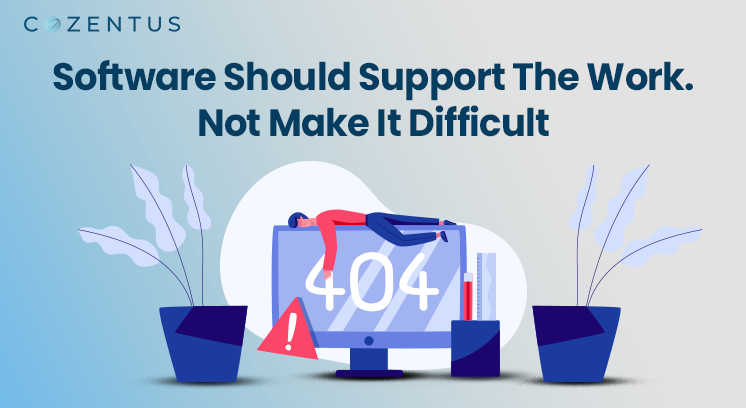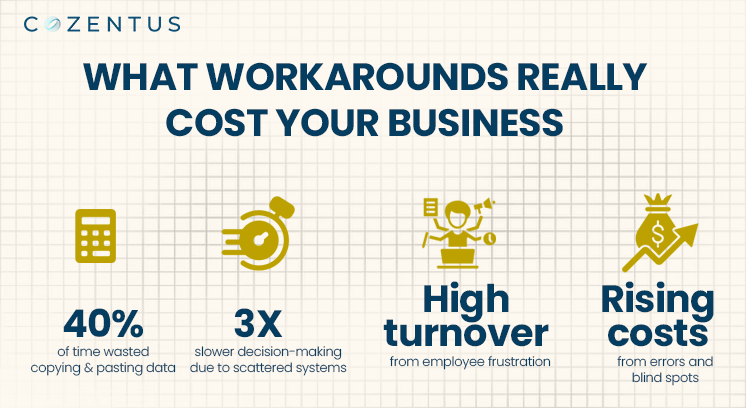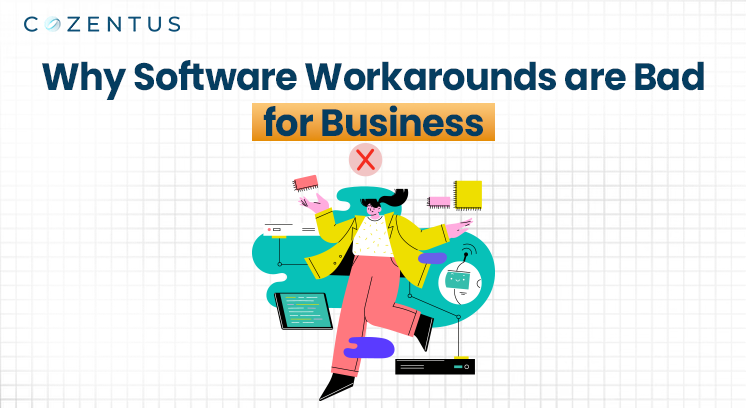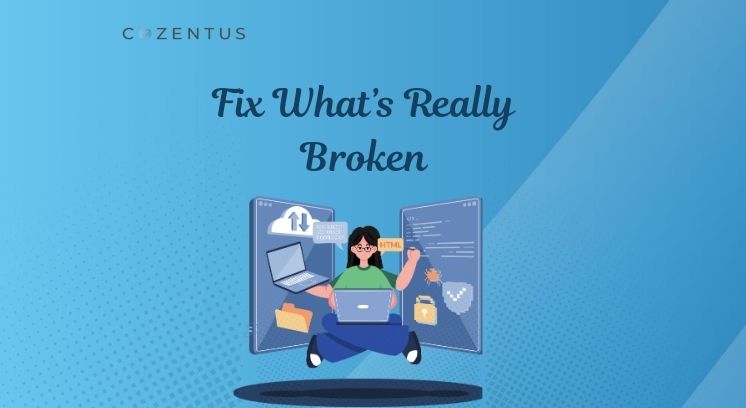When Workarounds Become the Actual Work
If you talk to any technical professional today, whether it’s a planner, a dispatcher, or even the CFO, they’ll tell you the same thing: they spend too much time engaging with systems that were supposed to make their life easier.
Every day, teams jump between multiple platforms just to get one shipment update. They copy-paste data into spreadsheets because the TMS doesn’t give them the report they actually need. They send follow-up emails because the visibility tool didn’t provide full context.
This isn’t the exception. It’s the routine. And here’s the truth: if your teams are constantly working around the tools, it’s not because they don’t know how to use them. It’s because the tools were never designed for the way their operations really work.

The Cost of Living in Workarounds
On the surface, a few extra clicks or a spreadsheet correction may not look like a big deal. But when workarounds become an everyday work, the hidden costs grow.
- Lost Productivity: Time that could be spent solving customer problems or optimizing other operations is wasted on finding information across disconnected systems.
- Decision Delays: When data isn’t accurate or accessible, teams delay decisions - or worse, make them completely ignore.
- Employee Frustration: Skilled professionals don’t want to spend their day cutting and pasting data. High turnover in organizations is often linked to this type of daily frustration.
- Business Blind Spots: Workarounds hide systemic issues. Leadership may believe the system is working, while teams on the ground are wasting hours just to make it usable.
In a domain like logistics, margins are thin, deadlines are tight, and customer expectations keep on rising. This wasted energy is more than just an inconvenience. It reduces competitiveness.
Why Do Workarounds Exist in the First Place?
Most organizations don’t choose software that doesn’t fit. They choose the best they can find at the time. The problem starts when tools are built in isolation. Either designed for a generic industry or based on outdated processes that don’t match the complex ways modern operations work.
Some common causes include:
- One-size-fits-all tools: Generic systems try to be everything to everyone, and in the process, they don’t fully solve anyone’s needs.
- Legacy infrastructure: Many organizational platforms are decades old, always patched together instead of updated.
- Poor integration: Even good systems fall apart when they don’t talk to each other. That’s why you still see so many copy-paste cycles between TMS, ERP, and visibility solutions.
- Lack of user-first design: If the system wasn’t designed around the day-to-day work of the organization, it results in too many manual workarounds.
The Logistics Perspective: Why It Hurts More Here
In logistics, software that doesn’t fit the curriculum is felt more vividly than in most industries. Why? Because logistics is dynamic, interconnected, and time-sensitive.
- A single late update on a container arrival can ripple across an entire network.
- A missing customs document can waste shipments worth millions.
- A lack of real-time visibility can leave customer service teams making apologies instead of providing answers.
Unlike other industries, logistics doesn’t have the luxury of “getting back to it tomorrow.” Every delay and inefficiency has an immediate business impact. That’s why workarounds in this area are not just minor hiccups - they’re huge strategic risks.
The Human Side: “This Is What Our Days Actually Feel Like”
Talk to any logistics team, and you’ll hear the same stories:
“We track critical shipments in WhatsApp because the visibility tool isn’t reliable.”
“We have three different reports for the same shipment, and none of them match.”
“I spend two hours every day just cleaning up data before I can even start my real work.”
These are not rare cases. They’re everyday issues. And they lead to one unavoidable conclusion: if the tool requires workarounds to function, then the tool is broken.

What Senior Leaders Need to Recognize
Executives often look at software investments as “done deals.” The system is implemented, the vendor promised great ROI, and the dashboards look clean.
But here’s the reality: the dashboard may look fine because the team built workarounds behind the scenes to feed it. What leadership sees as efficiency may lead to too much manual labor.
This creates two dangers:
- Leaders underestimate the cost of inefficiency.
- Teams lose faith in the leadership.
For senior leaders, the challenge is not just choosing technology; it’s ensuring that technology solves their everyday problems rather than increasing them.
A Better Way: Software That Fits Every Scenario
So, what does it look like when software actually works the way it should?
- User-First Design: Tools built around the real workflows of professionals, not generic templates.
- Seamless Integration: Systems that talk to each other and reduce copy-paste cycles and data silos.
- Real-Time Intelligence: Visibility that isn’t delayed or incomplete, but gives decision-makers the full picture instantly.
- Scalable Flexibility: As the networks evolve, the system should adapt new techniques without forcing new workarounds.
In short, software should adjust to fit the business, not force the business to adjust around the software.
You Might Like This: The System is Not Broken. It Was Just Never Built for You.
Rethinking from the Ground Up
The logistics industry is at an inflection point. Customer expectations are higher than ever, global networks are more complex, and risks keep on increasing, be it regulatory, environmental, or geopolitical.
Occasional fixes and endless workarounds won’t be enough. The time has come to rethink logistics technology from the ground up.
This means asking tough questions:
- Are our systems really saving us time, or are they just shifting the burden to manual work?
- Do our teams trust the data they see, or do they double-check it manually outside the system?
- If we started fresh today, would we rebuild our tools the same way, or would we design them entirely differently?
The answers to these questions can tell where organizations are wasting their energy and losing competitive ground.
Final Word: Don’t Settle for Workarounds
At Cozentus, we believe organizations, especially the supply chain logistics industries, shouldn’t settle for software that creates more work than it saves. The best technology doesn’t ask for workarounds - it removes them.
When systems fit seamlessly with the way your teams work, they unlock efficiency, reduce frustration, and deliver the kind of visibility and control that logistics leaders truly need.
Because at the end of the day, your people were hired to solve strategic problems - not software problems. And they deserve tools that help them do exactly that.
Want a custom software that scales with time? It's time we talk.







